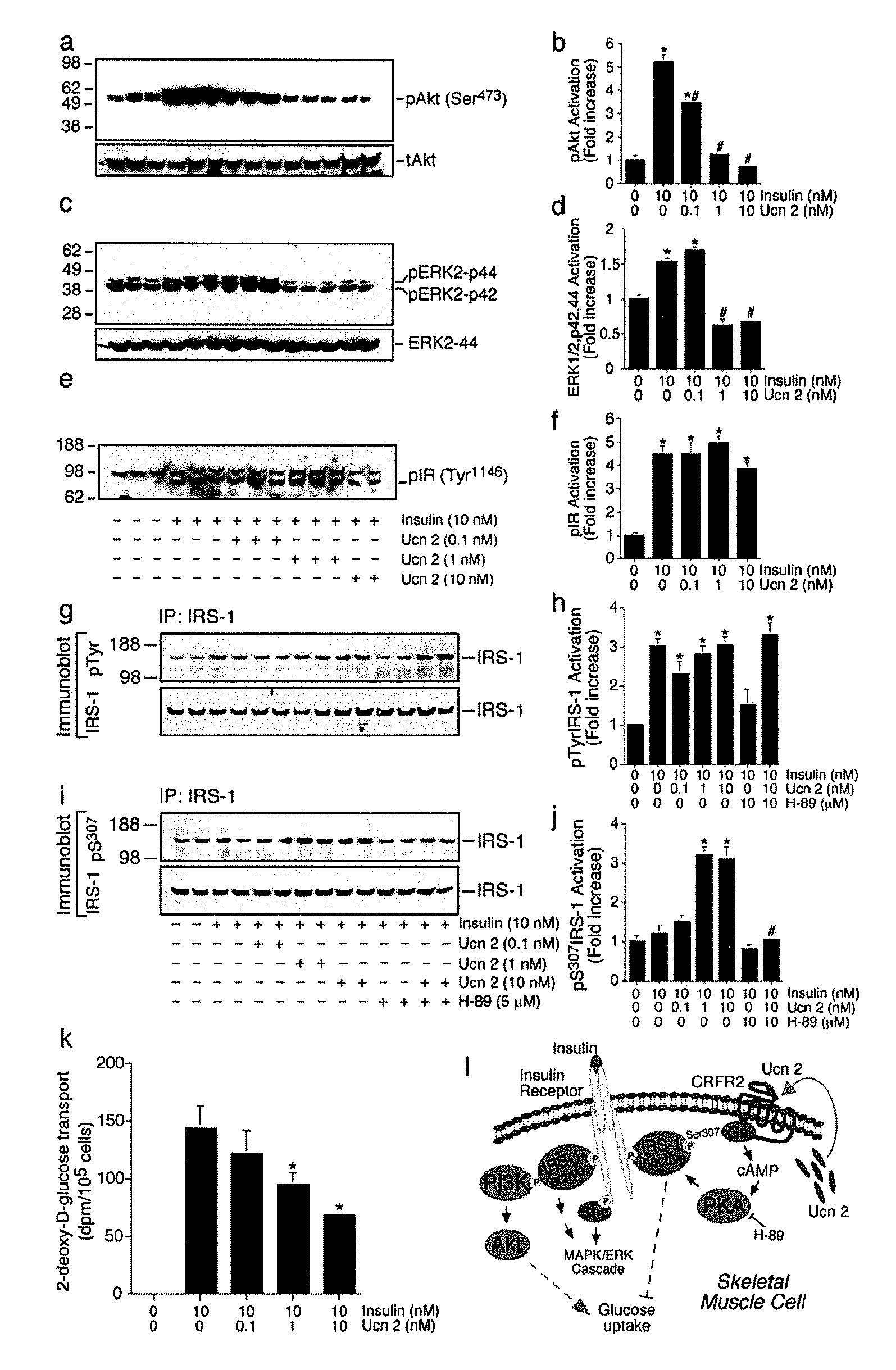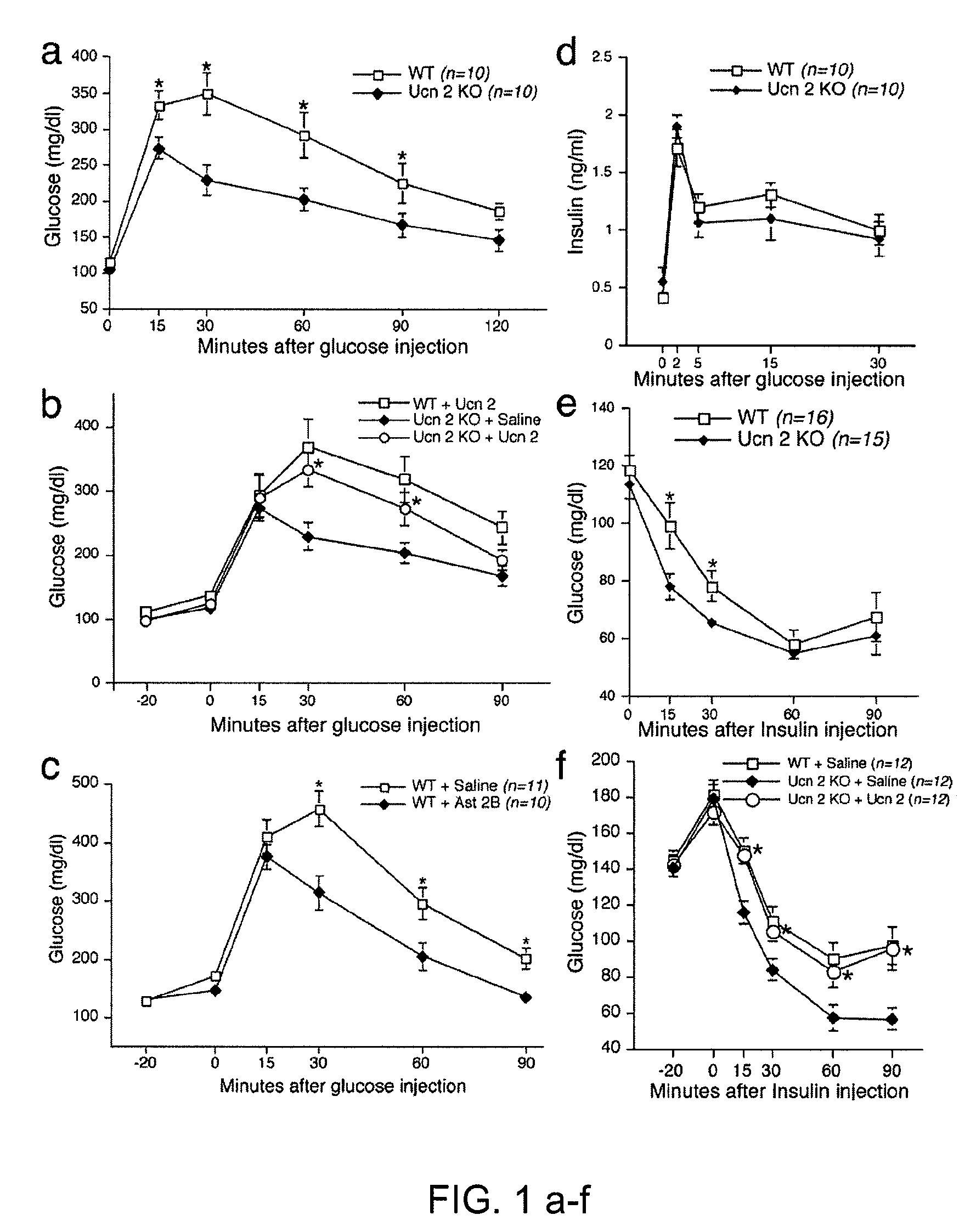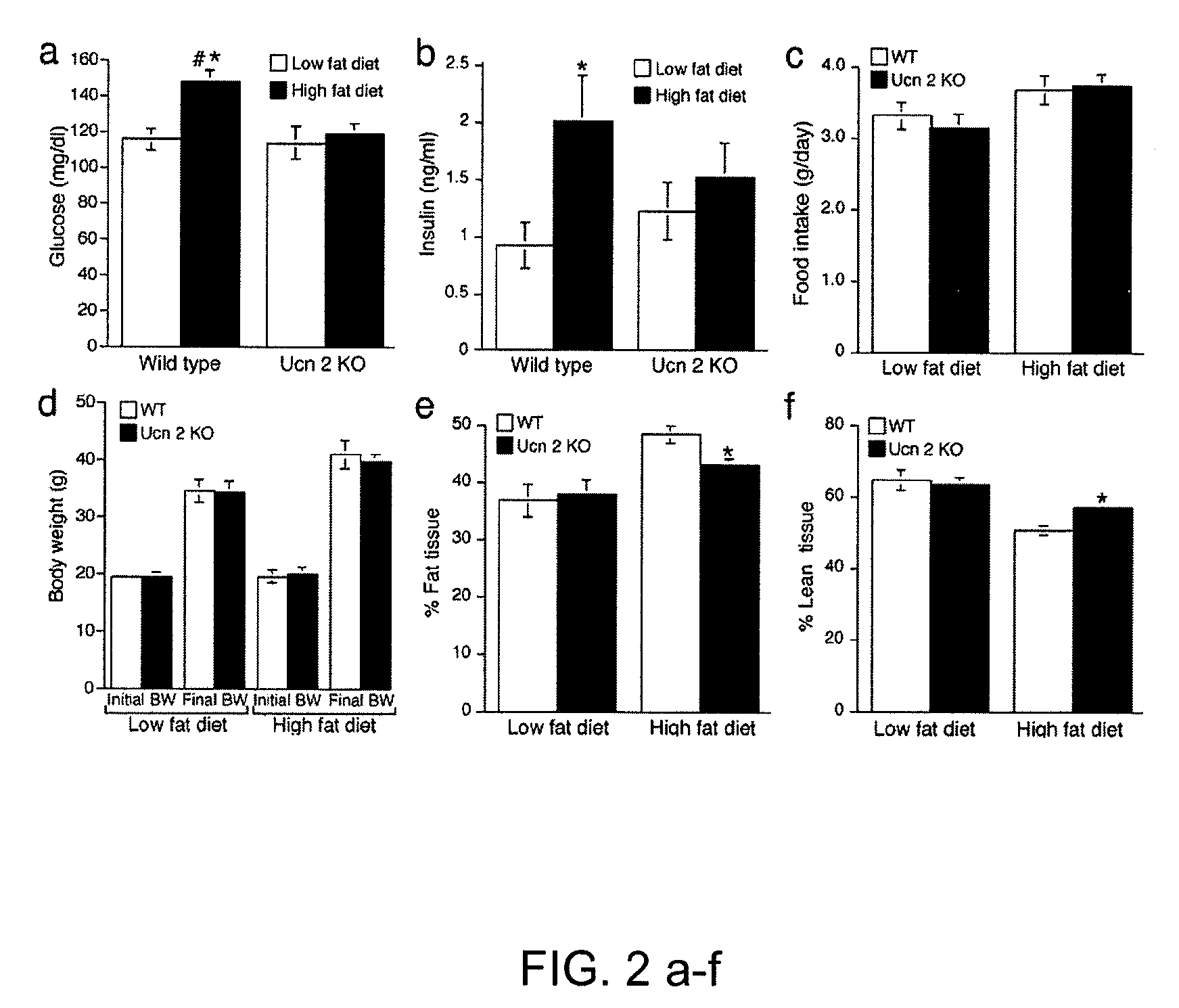Corticotropin releasing factor receptor-2 inhibitors and uses thereof
a technology of corticotropin and releasing factor, which is applied in the field of endocrinology, can solve the problems of reducing cellular insulin sensitivity and increasing serum insulin levels, and achieve the effect of attenuating glucose induced insulin secretion
- Summary
- Abstract
- Description
- Claims
- Application Information
AI Technical Summary
Benefits of technology
Problems solved by technology
Method used
Image
Examples
example 1
Construction of Ucn 2-Null Mice
[0158]To determine the physiological role of Ucn 2, mice deficient in this peptide were generated. A genomic DNA clone containing Ucn 2 was isolated and a targeting construct in which the full Ucn 2 coding sequence was replaced with a neomycin-resistant gene cassette was generated. J1 embryonic stem (ES) cells were electroporated with the targeting construct and were selected as previously described (Smith et al., 1998). Targeted ES cells were injected into C57BL / 6 mice blastocysts to generate chimeric mice, which transmitted the null mutation through the germline. Germline transmission of the disrupted allele was confirmed by Southern blot analysis. Ucn 2 expression was not detected in knock-out mice by either RT-PCR or immunohistochemistry (methods described below). Mutant mice were found to be fertile and the mutant allele was transmitted in a Mendelian fashion.
[0159]RT-PCR Analyses
[0160]For semi-quantitative RT-PCR total RNA was extracted from the ...
example 2
The Effect of Ucn 2 on the Handling of Glucose Load
[0163]The ability of the Ucn 2 null mice and their wild type littermates to handle a glucose or insulin load was assessed using a standard glucose tolerance test (GTT) or insulin tolerance test (ITT) as described below. In separate experiments, mice were injected with saline or Ucn 2 peptide (0.1 □g / kg body weight, IP), 20 min prior to the ITT and GTT, or with astressin 2B (30 □g / kg body weight, IP), 20 min prior to the GTT in order to determine the effect of these molecules on handling of glucose load.
[0164]The results of the glucose load tests indicated that glucose tolerance was significantly enhanced in the mutant mice compared with their wild type littermates (FIG. 1a). Administration of synthetic Ucn 2 peptide to mutant mice prior to the glucose tolerance test restored blood glucose to wild type levels (FIG. 1b). Interestingly, administration of the CRFR2 selective antagonist astressin2B (Rivier et al., 2002), to wild type mic...
example 3
Ucn 2 Expression Modulate Lean Body Mass
[0169]Previous studies have shown that mice fed a high-fat diet are an excellent model to study impaired glucose tolerance and ontogeny of type 2 diabetes. To explore glucose metabolism in Ucn 2 null mice, mutant and wild type mice were placed on a high fat (45% kcal from fat) or a standard chow diet (11% kcal from fat) for 16 weeks (FIG. 2 a-f). Following the each treatment the body composition of the mice was determined by dual-energy X-ray absorptiometry (DXA) as described below. Data from the body composition experiments were analyzed to determine fat and lean tissue masses and bone mineral content and density. Ucn 2-null mice and wild type mice gained weight (FIG. 2d) and consumed food (FIG. 2c) similarly, both on a standard diets and when fed high fat diets. Remarkably, however, significant increases in blood glucose (FIG. 2a) and insulin levels (FIG. 2b) were observed only in the wild type mice and not in Ucn 2 null mice. Interestingly,...
PUM
| Property | Measurement | Unit |
|---|---|---|
| Mass | aaaaa | aaaaa |
| Sensitivity | aaaaa | aaaaa |
| Level | aaaaa | aaaaa |
Abstract
Description
Claims
Application Information
 Login to View More
Login to View More - R&D
- Intellectual Property
- Life Sciences
- Materials
- Tech Scout
- Unparalleled Data Quality
- Higher Quality Content
- 60% Fewer Hallucinations
Browse by: Latest US Patents, China's latest patents, Technical Efficacy Thesaurus, Application Domain, Technology Topic, Popular Technical Reports.
© 2025 PatSnap. All rights reserved.Legal|Privacy policy|Modern Slavery Act Transparency Statement|Sitemap|About US| Contact US: help@patsnap.com



